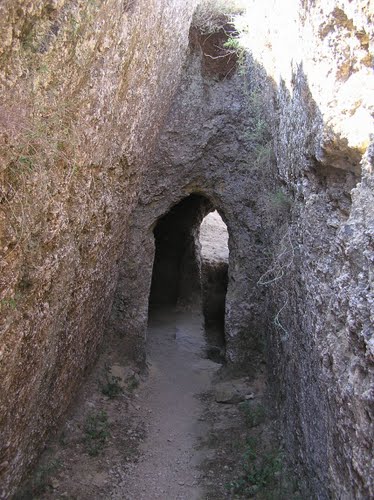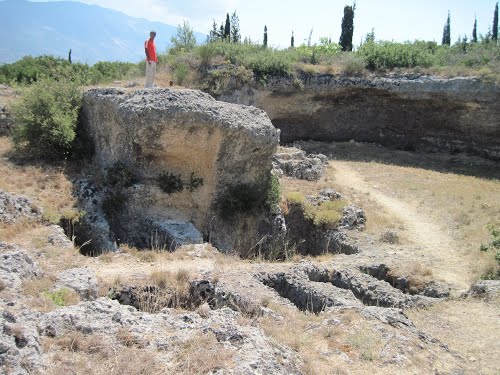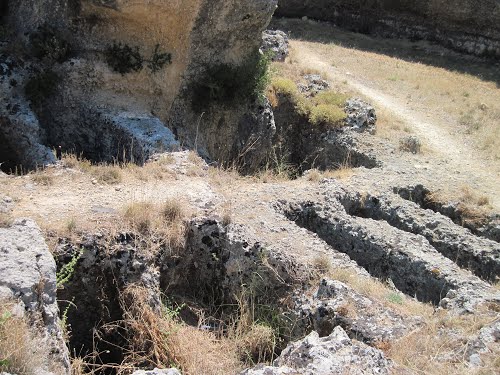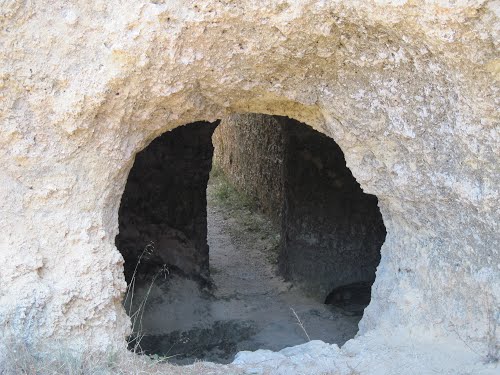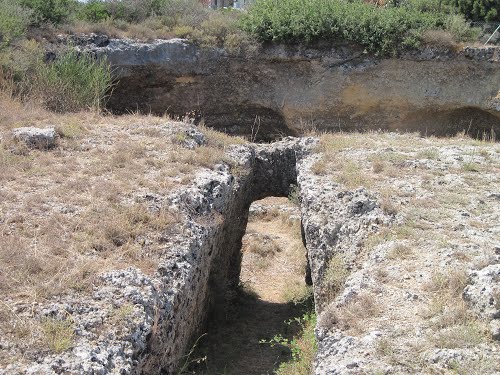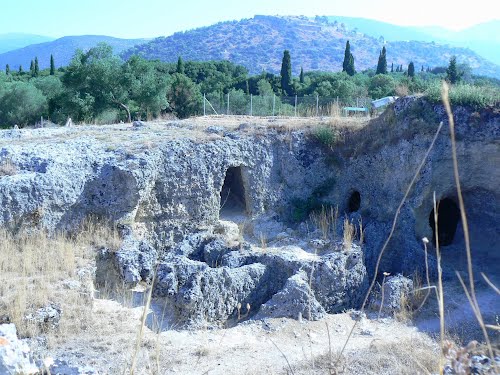Up to now, it is the biggest Mycenaean (1390/70- 1060/40 B.C.) graveyard on the island, with the most representative chamber-graves in the Ionian. The tombs are located 9 kilometers from Argostoli. They are of great significance as the tombs were found unplundered.
The first findings came to light by accident in 1813, during the opening of a road in the area of Livathos by the Swiss Major of the British Army and Commander of Kefalonia and Ithaca from March 1810, Charles- Philippe de Bosset. The need for excavating limestone dirt for layering the roads lead to the most appropriate soft limestone of the Mazarakata area. The properties of limestone had become apparent to the residents of the area from the Mycenaean age, about three thousand years earlier, the time when the renowned vaulted tombs were built. So, the Mycenaean cemetery was revealed accidently and four of its tombs were initially broken into. The findings of the then unknown civilization found in the catacombs were collected and came under the possession of the island’s Commander de Bosset. He then donated them to the Neuchâtel Museum in his homeland, where they were forgotten, identified much later and still remain there today.
P. Kavvadias located the cemetery in 1899 and continued excavations during the period 1908- 1909. All in all, 16 chamber-like tombs were explored by de Bosset and Kavvadias, while the 17th tomb was found much later, in 1951. It was located by the country road and became apparent after it had collapsed. It was explored by Spiros Marinatos and was then covered.
The tombs are underground, carved into the rock (sandstone) and are formed by the road, the entrance and the chamber. They exhibit architectural diversity as far as the size of the roads, the shape and dimensions of their chambers are concerned. The length of the roads ranges from 4 to 6metres and another one with a length of 15 meters has been found too. The road leads from the entrance to the chamber. The tomb’s entrance is narrower than the path; it doesn’t always have a regular shape and it was usually sealed off with a large stone after the burial. The Chambers’ dimensions vary, there are small ones( 1,40m. X 1.90 m.) with few burials; and also others, larger ones (5,50m. x 4,80m.) with more burials. The shapes of the chambers also vary as there are square, trapezoid shaped and elliptical ones. Many graves were dug inside the chambers in order to bury the dead. Most of them have the dimensions of the size of an average person or even bigger. The depth of the graves also varies and can be as deep as 2,50m. The dead were buried in a contracted position while the graves were used again and again, since the custom of their removal was dominant.
The most representative burial offerings from the Mazarakata Cemetery are displayed at the Archaeological Museum of Argostoli. Among these offerings, there are some that stand out: a handmade stirrup amphora, following the common wheel like Mycenaean design, a large jug decorated with breast-like lumps on its handle and a ring shaped utricle, all of which are unique items.

